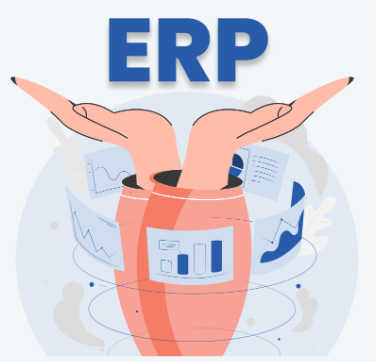Inventory management for your business is a balancing act. Too much stock will limit your capital; too little will impact sales and customer satisfaction.
But what happens when your ERP system fails to meet your inventory needs?
Fortunately, you don’t have to replace your entire ERP system. You can simply extend its functionality using third-party add-ons. In this blog, we’ll explore common inventory management challenges and how third-party solutions can help you tackle these issues.
This article is part 2 in our series Extending the Value of your ERP:
- How to Solve Them with Business Analytics
- Extending Your ERP’s Capabilities with Third-Party Add-on Solutions
- Best of Breed Strategy vs. New ERP Investement

Why Inventory Management is Challenging
Any company handling physical products must first focus on inventory control and eliminating its challenges.
It influences overall operational efficiency, customer satisfaction, and cash flow. However, traditional ERP systems could lack the specific features required to manage the whole complexity of inventory control.
Common inventory challenges include:
1. Forecasting Demand Accuracy
While challenging, demand forecasting is absolutely vital for your business’ inventory management. Even minor errors in calculation can cause overstocking or stockouts. Standard ERPs might provide basic forecasting to tackle these challenges. However, many models lack comprehensive tools to study seasonal fluctuations, market trends, and advertising impacts.
2. Tracking Real-Time Inventory
Maintaining real-time inventory tracking across several sites can be difficult. This is especially true with traditional ERP systems that only update inventory levels periodically. Without real-time visibility, making quick decisions is difficult, leading to inefficiencies and missed opportunities during your inventory management.
3. Automating Replenishment and Order Management
Not only are manual reordering and restocking procedures time-consuming, but they also run a risk of mistakes. Your ERP system’s lack of automation causes your staff to waste time on jobs that could be automated, therefore compromising their capacity to concentrate on more strategic work.
4. Integrating Data from Multiple Sources
Data from many sources—sales channels, warehouses, suppliers, and more—forms the basis of modern inventory management and control. Most ERPs create silos that limit the view of your whole inventory ecosystem since they are not meant to manage these complex integrations naturally.

The Benefits of Third-Party Add-ons for Inventory Management
Third-party add-ons offer numerous advantages when it comes to managing inventory effectively within your ERP.
- Scalability: Add-ons can grow with your company and offer sophisticated inventory control tools without upgrading your ERP.
- Cost-effectiveness: Typically speaking, add-ons are less expensive than a complete ERP overhaul. They let you handle particular problems related to inventory management without having to commit time and money to redesign the whole system.
- Customization: Many outside solutions offer industry-specific customization choices that allow you to tailor them to your company’s particular needs.
- Reduced Dependency on IT: Many add-ons enable non-technical workers to control and monitor inventory, without continual IT support, by means of user-friendly interfaces and self-service reporting.
- Improved Decision-Making: The information gathered from many add-ons offers practical understanding. Based on thorough, real-time data, you may make better decisions about inventory management, levels, buying, and sales policies.
Choosing the Right Add-on for Your Inventory Management Needs
When selecting an add-on solution, it’s essential to consider your specific inventory management challenges and goals. Here are a few tips for choosing the right solution:
Choosing an add-on solution requires you to take your particular inventory issues and objectives into account. These guidelines will help you select the appropriate solution:
- Assess Compatibility: Make sure the add-on offers flawless integration and fits your ERP system.
- Review Functionality: Search for features like demand forecasting, automation, or multi-location tracking that directly meet your demands.
- Consider Scalability: Select a solution that will evolve with your company, offering more features and capabilities as you grow.
- Test Usability: Choose a tool your staff finds simple to operate. Easy solutions cut training time and increase adoption.
Conclusion
Inventory management challenges can strain your operations and impact profits. You can now extend the capability of your ERP system with external add-ons to maximize operations, reduce expenses, and improve customer satisfaction.
Download our entire white paper, “Extending the Value of Your Current ERP with Business Analytics,” for more ideas. It addresses other techniques and doable fixes to enable you to utilize the ERP fully.
